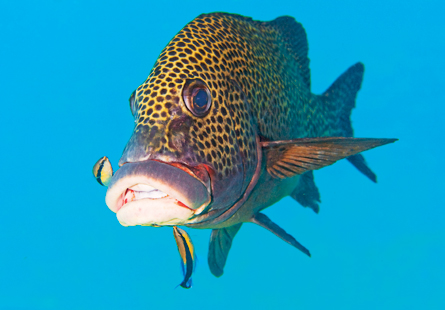Life
Ultrasonic ribbits, saving dead trees and fishy retribution in this week’s news
Did I just ribbit?
In the unfolding story of China’s ultrasonic frogs, it appears that females cannot hear the high-frequency zest of their own flirtations. The concave-eared frogs were reported in 2006 to court using chirps including high squeak components that carried above the low roar of mountain streams where the frogs live. Research showed that males’ ears may be adapted to such high serenades. Now tests of female response to recordings as well as measurements of female brain reactions suggest that during evolution females have come to make, but not hear, the ultrasonic component of their own sweet nothings, researchers in China say in the June 15 Nature Communications. —Susan Milius

Save our snags
What the world needs now is more dead trees, or snags, an international research team suggests in an upcoming Frontiers in Ecology and the Environment. The researchers analyzed data from North and South America and Eurasia to see how birds that nest in cavities find their homes. Most of these species can’t gouge out their own snuggeries, and the new analysis suggests there are geographical differences in how the birds find suitable holes. In North America, some 77 percent of nesting cavities come from excavator birds such as woodpeckers. Preserving cavity-nesting birds will require preserving both the hole-makers and old trees that non-avian forces such as fungi, fire and general falling apart can turn into home-sweet-homes. —Susan Milius
Punishing naughty cleaners
When a female cleaner fish cheats on the job, her male partner’s protests vary depending on whether she ruined a chance of scoring big. Cleaner fish, sometimes in pairs, nibble at parasites on bigger fish. Cleaners would actually prefer to nibble the clients’ mucous, but a cleaner that bites a client sends it darting off. Experiments find that male cleaners chase and nip at a female partner more severely if she scares away a bigger client. Males were also rougher on big females, perhaps because a large female can change sex and become “her” former partner’s competitor, an international team says in an upcoming Proceedings of the Royal Society B. —Susan Milius
Predators swim in patterns
The meanderings of apex marine predators — such as sharks and turtles — are more predictable than researchers had anticipated. By attaching 4,306 tracking tags to individuals from 23 North Pacific Ocean species, scientists with the Tagging of Pacific Predators study charted 1,791 movement patterns over 10 years. The electronic hitchhikers revealed that some animals, such as white sharks and yellowfin tuna, loop back to the same area off California’s coast each year. Others, such as leatherback turtles, swim thousands of kilometers between shores on opposite sides of the Pacific. Understanding these patterns and habitats can help inform ecosystem management, an international team of scientists reports online June 22 in Nature. —Nadia Drake






